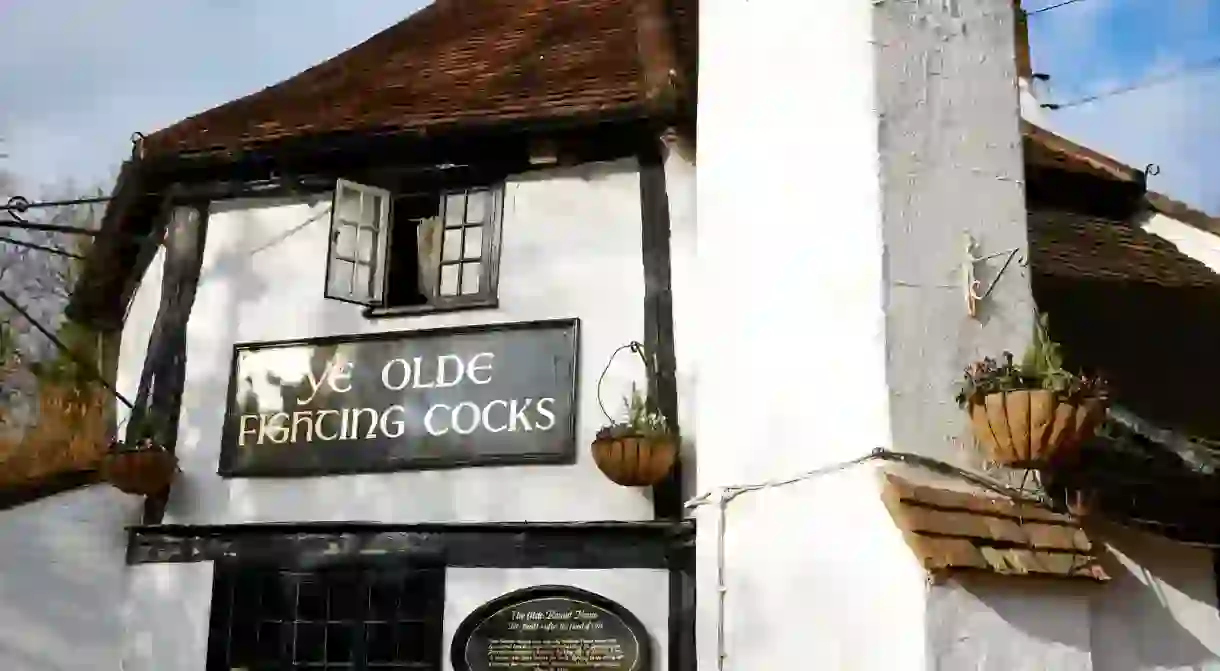A History Lover’s Guide to St Albans

The pretty Hertfordshire city of St Albans dates back over 2,000 years, and direct trains from St Pancras mean the scattered clues to its 20 centuries of history are just 20 minutes by rail from Central London. It makes for an easy and captivating day trip for anyone interested in the past, with Roman ruins, Tudor buildings and magnificent Medieval pubs among the numerous historical treasures waiting to be discovered.

St Albans began life as an Iron Age Celtic settlement called Verulamium before falling under the control of the Romans during their conquest of Britain, which began in AD 43. Over the next few centuries it became one of the three largest Roman towns in the country; the other two were Londinium (now London) and Colchester. It got its current name from Alban, Britain’s first saint, who was executed by the Romans in the third or fourth century after refusing to renounce Christianity, at the time a relatively new religion.

The city can be broadly explored chronologically, so once you’ve hopped off the train at St Albans City station, make a beeline for Verulamium Park, about a mile to the west. This is where the original settlement lay, and the area is packed with fascinating Roman ruins. Start with a look around the Verulamium Museum, which gives a superb overview of the period and has some incredibly well-preserved mosaics on display, along with other Roman artefacts, including gold coins and pottery.

In the archaeological park surrounding the museum there are surviving chunks of the original Roman fortifications, and foundations from the old city gate are clearly visible. Most impressive is the Roman Theatre, which is the only one of its kind in Britain. (It’s different from an amphitheatre, in that it has an actual stage.)
After the Romans came the Anglo-Saxons, and just a few metres from the remains of the theatre you can find the 1,000-year-old, remarkably intact St Michael’s Church, which is the best-preserved Anglo-Saxon building in the entire country.

You might be feeling a bit peckish by now, so you could head further west into Gorhambury Estate, which borders Verulamium Park, to have a picnic among the crumbling, atmospheric ruins of Gorhambury House, which was once a grand Tudor mansion. Alternatively, you could grab a pint and a gourmet burger in nearby Ye Olde Fighting Cocks, the oldest pub in Britain.

Heading back into the present-day city you’ll find a host of beautiful Medieval buildings, with the crowning highlight being St Albans Cathedral, the oldest place of continuous Christian worship in Britain. The current building is mostly Norman and dates back to around AD 1000, though there have been several additions over the centuries.

Just across the street you can see the 600-year-old St Albans Clock Tower, the only surviving Medieval belfry in England. (Climb the 93 steps to the top for a great view.)

A short walk north will take you to St Peter’s Street, home of the St Albans Street Market (every Wednesday and Saturday), which dates back more than a thousand years and has had a royal charter since 1553.

Alternatively, you could head the same distance south to Lee House, another Tudor ruin, built on the site of what was Sopwell Nunnery, the name by which the location is still most commonly known.

If you’ve got room for more history before getting back on the train to London, check out Clarence Park, just by the station. It looks much as it did when it was built in the Victorian period, with its original rose gardens, drinking fountains and park-keeper’s lodge.
ThamesLink makes it easy to travel to St Albans from London St Pancras in just 20 minutes. To find out more about train times and to book your tickets, visit thameslinkrailway.com.













